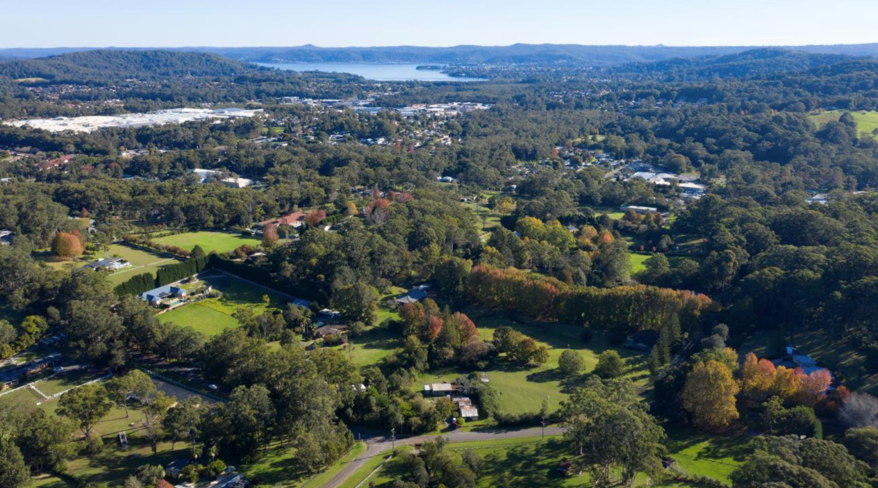After undertaking a comprehensive analysis of the documents available on Council’s Your Voice Our Coast website, the CEN has concluded that it does not support the proposed incorporation of the Deferred Lands into the Central Coast Local Environment Plan 2022 (CCLEP 2022).

“We encourage you to use our submission guide to prepareyou own submission. The closing date for submissions to Central Coast Council is November 8. Here’s a summary of our key arguments,” said CEN Chair, Mr Gary Chestnut.
Central Coast Council has argued that the proposed rezoning is “like for like” but this is NOT the case.
Differences in the way the former Gosford City Council and Wyong Shire Council zoned conservation land have been compounded, not resolved, by the creation of the Central Coast Consolidated Local Environmental Plan 2022 (CCLEP 2022). This has resulted in the proposed rezonings in the exhibited planning proposal NOT being like for like.
Sixty land parcels, with a total of 244 ha, that are currently zoned 7(a) Conservation, are recommended to be transferred to C2 Environmental Conservation. The remaining 1264 parcels with a total area of 3477 ha will be a mixture of C2 and C3 Environmental Management. Approximately 15% (520 ha) is proposed to be zoned C2 while the majority (85%) of the 7(a) parcels (2,957 ha) are proposed to be zoned C3.
The current minimum lot size is not proposed to be changed but the objectives and permitted land uses in the C3 zone under CCLEP 2022 mean this planning proposal would effectively rezone nearly 3,000 ha of former7(a) Conservation land into C3. It is misleading for Council to call this process ‘like for like’.
An increase in the number of land uses five to 34 uses changes the character of the zone by allowing more and different types of development. It places more development pressure on the land and reduces the available land left for biodiversity.
Some of the expanded list of land uses includes animal boarding or training establishments which allow the operation of an animal breeding facility on some of the region’s most sensitive environmental land.
Because Council proposes to rezone 3,000 ha of deferred 7(a) land to C3, it has then proposed to zone the 2,222 ha of 7(c2) deferred lands (over 2,150 parcels of land) as C4 in CCLEP 2022. This is not “like for like” in relation to the zone objectives or the permitted uses. The zoning objectives for 7(c2) are aimed at promoting ecologically, socially and economically sustainable development and the need for, and value of, biodiversity. These would be replaced in C4 with the objective to provide for low-impact residential development.
Some of the additional uses, such as Group Homes and Home Occupation (sex services), are at direct odds with the objectives of 7(c2) land.
The definition of a group home allows for the operation of a Drug and Alcohol Rehabilitation Facility. The definition of a Home Occupation (sex services) allows the operation of a brothel for two sex service providers if they reside at the property. Areas such as Niagara Park, Lisarow, Holgate, Matcham, Erina Valley, Pickets Valley, Wamberal, Kincumber, Empire Bay, Bensville, Bouddi, Terrigal, Avoca and MacMasters Beaches could see the lodgement of development applications for drug and alcohol rehabilitation centres and brothels.
- This planning proposal will result in the Central Coast region losing biodiversity.
Fundamental flaws in the current application of Conservation Zones by Central Coast Council have resulted in the boundaries for C2 zoned land not lining up with boundaries for Endangered Ecological Communities (EECs), endangered species and threatened species.
The ecological consequences of this failure to align the boundaries of the C2 zone with the occurrence of EECs are that threatened and endangered species are not being protected. The mapping of the high-value conservation land in CCLEP is hit and miss with significant zoning implications. The boundary of a planning zone is not an approximate line. It has strict legal implications under the Environmental Planing and Assessment Act 1979.
This major fault in the way CCC determines the boundaries of Conservation zones must be addressed before any deferred matters lands are rezoned as either C2, C3 or C4 under CCLEP 2022.
- This planning proposal will introduce land uses into Conservation Land Zones that are at odds with the conservation values and amenity of those lands.
Permitted land uses in C3, such as animal breeding facilities and community facilities, are at odds with the conservation values that formed the objectives of the former 7(a) land. Likewise, the permitted uses of drug and alcohol rehabilitation facilities and brothels in the C4 zone do not uphold the objectives of 7(c2) deferred lands.
The draft planning proposal, if adopted, would undermine the planning principles at the heart of the Conservation zones within the NSW Standard Instrument. For example, within the former Gosford City Council local government area, there is a progression of Conservation Zones. C2 lands are often located next to C1 National Parks and Nature Reserves. From a biodiversity and scenic perspective, this progression of zones provides a high level of protection and support to the National Parks and Nature Reserves.
In the former Wyong Shire, C3 Environmental Management land is often adjacent to C1 land. This jump from C1 National Park directly to C3 can weaken and undermine the conservation values of the National Parks and Nature Reserves.
- The proposed new zonings do not deal with the Coastal Open Space System (COSS) lands well.
The NSW State Government Biodiversity and Conservation Division in the Department of Planning has informed Central Coast Council that:
“… the new zonings do not adequately or equivalently address environmental matters or deal with COSS land well.”
The former Gosford city Council managed the Coastal Open Space System (COSS) as a network of reserves supporting native vegetation to achieve environmental and community benefits. At the time of amalgamation, the COSS network was 2,598 ha.
The COSS network is complemented and directly supported by the surrounding 3,721 ha of 7(a) Conservation land.
The current planning proposal has deleterious impacts upon the future of COSS.
A unique and precious legacy of the former Gosford City Council could, indeed, be jeopardised if this planning proposal goes ahead.
- The mapping of the C2 zone boundary has not addressed the Aboriginal Cultural Heritage values located across the landscape of the vegetated parcels of 7(a) Conservation land under IDO 122.
Council is reminded that the zoning objectives within the SI for C2 zone land are “… to protect, manage and restore areas of high … cultural … value” and “… to prevent development that could destroy, damage … (or adversely affect) … those values.”
When Aboriginal heritage is examined at a site-specific level it has significant impacts upon the use of the land. Further, as explained in the Somersby Industrial Park Plan of Management, it is not only the immediate location of an Aboriginal site that needs protection but the landscape where the Aboriginal feature is located.
The Somersby Industrial Park Plan of Management resulted in setting aside approximately 8.7 hectares of land zoned E4 General Industrial to protect the cultural heritage. In excess of 2,900 sites are recorded in the Aboriginal Heritage Information Management System (AHIMS) across the former GCC LGA. Until site-specific Aboriginal heritage studies can be undertaken across the entire 3721 ha of 7(a) Conservation land under IDO 122, Council has insufficient information to determine whether an area should be included or excluded within a C2 zone boundary.
See the complete submission guide and appendices on the CEN website
Enjoy this article? Explore more of our ESG News below:
Environmental Justice News | Social Justice News | Good Governance News | Climate Change News | ESG Investing News | Housing News | Renewable Energy News | Breaking Central Coast News
Prefer your news delivered to your email inbox?
Click here to subscribe to our free weekly newsletter to stay up-to-date with local, national and global ESG news.


